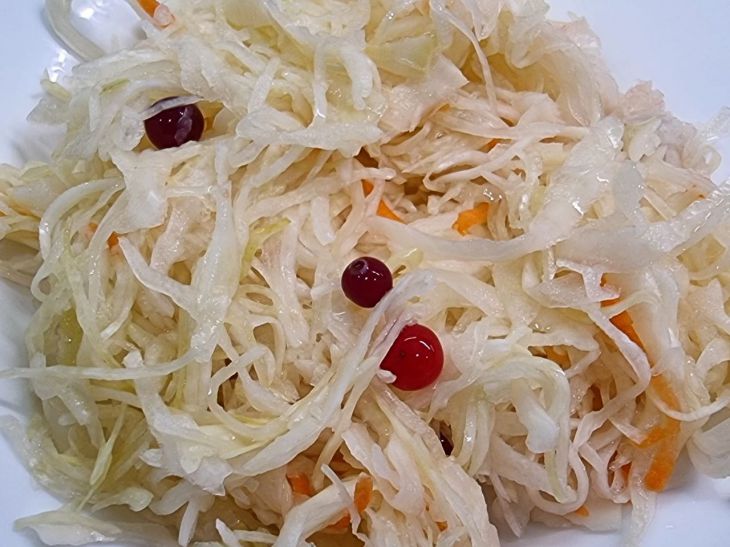Accessible secrets that will help you prepare juicy, crispy and delicious sauerkraut.
Making sauerkraut is not a difficult task, but it is full of nuances, without which the undertaking is doomed to failure.
Why is cabbage soft?
There may be several reasons for this. Here are the main ones:

1. Cabbage was cooked during the warm season.
2. An early variety of cabbage was used.
3. The cabbage was overfed with fertilizers.
4. Lack of salt. Less than 20 g per 1 kg was introduced.
5. High fermentation temperature.
6. During fermentation, air was not released well.
Soft cabbage is no different from crispy cabbage in taste, color and smell.
Why is cabbage slimy
The problem is the excess air, which provokes the development of mycelial yeast. They do not harm human health, but they are needed only at the beginning of fermentation and in small quantities.
If there are too many of them, the cabbage may rot. It is important that the preparation is always completely covered with brine.
Why is cabbage bitter?
The problem may be in the low cooking temperature – less than +18 °C. Perhaps the heads of cabbage themselves froze during storage.
If the cabbage is oversalted, the dish may also taste bitter.
Why is cabbage so sour?
Butyric acid bacteria are necessary for an ideal starter. Their normal development occurs at a temperature of +18 … +20 °C. If the indicator is higher, they multiply very quickly. An excess of these bacteria leads to the fact that the finished dish is very sour.
An important nuance
Cabbage cannot be fermented in aluminum dishes. Lactic acid corrodes aluminum, causing harmful substances to enter the dish. An enamel bowl or saucepan is best suited for preparing sauerkraut.
